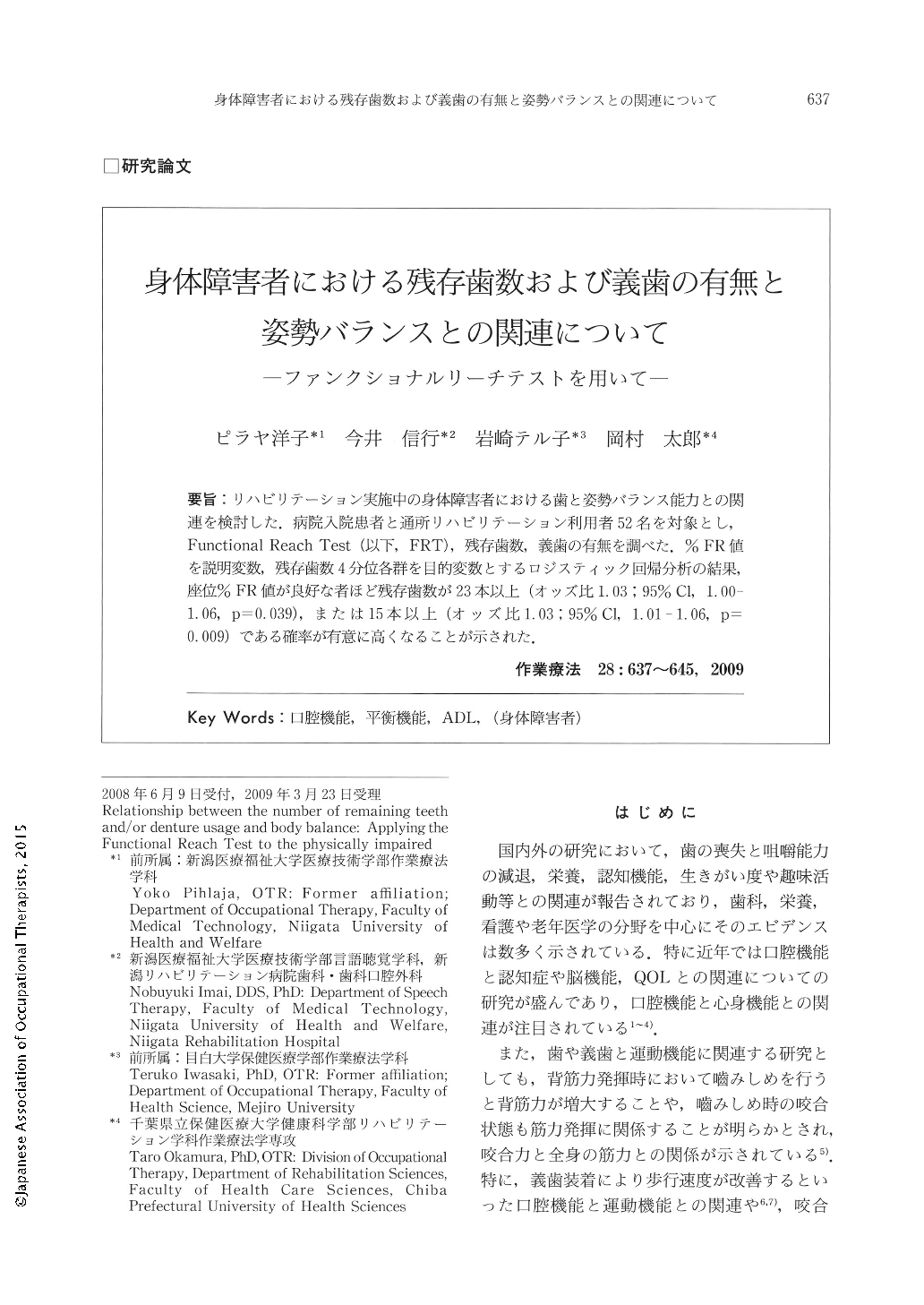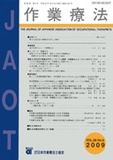Japanese
English
- 販売していません
- Abstract 文献概要
- 1ページ目 Look Inside
- 参考文献 Reference
- サイト内被引用 Cited by
要旨:リハビリテーション実施中の身体障害者における歯と姿勢バランス能力との関連を検討した.病院入院患者と通所リハビリテーション利用者52名を対象とし,Functional Reach Test(以下,FRT),残存歯数,義歯の有無を調べた.%FR値を説明変数,残存歯数4分位各群を目的変数とするロジスティック回帰分析の結果,座位%FR値が良好な者ほど残存歯数が23本以上(オッズ比1.03;95%Cl,1.00-1.06,p=0.039),または15本以上(オッズ比1.03;95%Cl,1.01-1.06,p=0.009)である確率が有意に高くなることが示された.
The aim of this study was to determine the relationship between the number of remaining teeth and/or denture usage and body balance with physically impaired people.
The participants were 52 people (age 53〜92, mean±SD 72 ±9.9) who were hospitalized or regularly treated at a rehabilitation center. We evaluated the number of remaining teeth, denture usage and body balance using the Functional Reach Test (FRT), and the Functional Independence Measure (FIM).
Logistic regression analyses found that the number of remaining teeth in groups 1〜3 (0〜22, in each quartile groups) and group 4 (23〜29) while sitting % FR was significant (O.R. 1.03 95% CI, 1.00-1.06, p = 0.039). Also, the number of remaining teeth in groups 1 & 2 (0〜14, in each quartile groups) and groups 3 & 4 (15〜29) while sitting % FR was significant (O.R. 1.03 95% CI, 1.01-1.06, p=0.009). The Spearman's rank correlation (p), (alpha = 0.05) analyses found that FIM correlated with standing % FR (ρ = 0.87, p = 0.003).
The results indicate a relationship between the number of remaining teeth and functional reach and, therefore, a connection to posture control. Also, recognizing the connection between FR value and FIM, the results support a relationship between functional reach and ADL. Moreover, in addition to the relationship between the number of remaining teeth and FR value, we speculate that persons with many teeth have a satisfactory reach range and ADL.

Copyright © 2009, Japanese Association of Occupational Therapists. All rights reserved.


